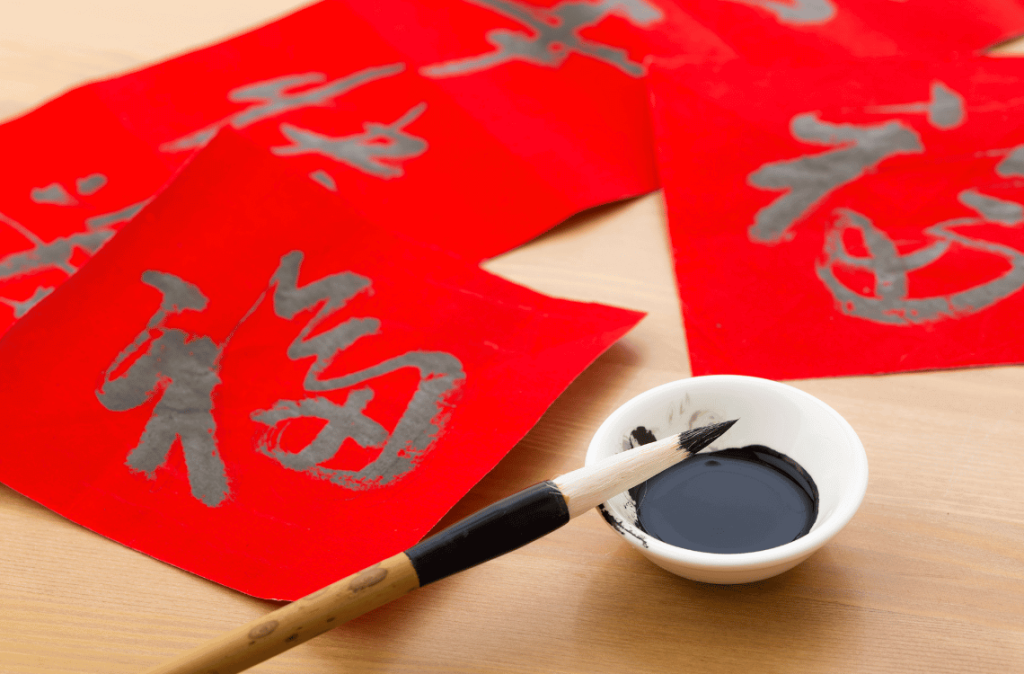In today’s bustling world, where technology often overshadows traditional practices, the art of Chinese calligraphy for kids stands out as a significant cultural and developmental tool. This ancient art form, deeply rooted in the history of China, offers children a unique blend of educational and personal growth opportunities.
By engaging in Chinese calligraphy, kids delve into an important cultural heritage and reap numerous benefits that enhance their cognitive, motor, and emotional well-being. Let’s explore how parents can leverage the multifaceted advantages of calligraphy, ensuring holistic development for their children.
Introduction to Chinese Calligraphy for Kids
Highlighted
Chinese calligraphy, an esteemed visual art, has deep roots in China’s history, stretching back thousands of years. Initially, it served as both a communication tool and a medium for artistic expression.
Over time, it has evolved, symbolizing the elegance and depth of Chinese culture. Notably, calligraphers value the precise execution of strokes, where each line and curve carries significant meaning.
Moreover, this art form emphasizes the harmony between form and content, blending aesthetics with conveying philosophical ideas.
Consequently, mastering Chinese calligraphy requires technical skill and a deep understanding of its cultural essence.
Thus, it is a revered tradition, bridging past and present through its rich heritage and enduring beauty.
1. Enhancing Concentration and Focus
Firstly, Chinese calligraphy demands meticulous attention to detail. Children can significantly improve their concentration by practising controlling the brush to form precise strokes.
This heightened focus translates to better academic performance as children learn to apply the same concentration level to their studies.
Parents can encourage this by setting up a quiet, distraction-free space for calligraphy practice, thus promoting an environment conducive to deep focus and attention.
2. Developing Fine Motor Skills
Moreover, the art of calligraphy serves as an excellent exercise in fine motor skill development. Holding and manipulating the brush strengthens hand-eye coordination, which is crucial for everyday tasks such as writing and tying shoelaces.
Here, parents can support this development by providing diverse tools and materials, such as different brush sizes and ink densities, allowing children to experiment and refine their motor skills through varied tactile experiences.
3. Boosting Cognitive Functions
Engaging with Chinese calligraphy also offers a cognitive boost. Learning and memorizing characters enhance memory, recognition, and analytical skills as children apply complex stroke order rules.
To maximize these benefits, parents can introduce calligraphy alongside language learning apps or Chinese calligraphy generators, integrating technology with tradition to create a more engaging learning experience.
4. Fostering Cultural Appreciation
The significance of Chinese calligraphy extends beyond its aesthetic value, serving as a bridge to Chinese history and culture. Understanding how calligraphy was used in ancient China enriches children’s knowledge and appreciation of world cultures.
Parents can complement calligraphy practice with stories and facts about its historical significance, deepening their child’s cultural understanding and respect.
5. Cultivating Patience and Discipline
Mastering calligraphy requires patience and discipline, virtues that are invaluable throughout life. The slow, deliberate practice teaches children the importance of perseverance and meticulous effort.
Parents can highlight their children’s progress, however small, to motivate and build a sense of discipline and patience in their pursuit of mastery.
6. Encouraging Artistic Expression
Chinese calligraphy for beginners allows for personal expression within the bounds of tradition. Each stroke and character can vary with the individual’s style, offering a creative outlet.
Therefore, parents should encourage their children to experiment with different styles, including various Chinese calligraphy fonts, to express their unique artistic voice.
7. Promoting Mental Serenity
The rhythmic nature of calligraphy practice can be meditative, reducing stress and promoting mental serenity. This calming effect is especially beneficial in today’s fast-paced world.
Also, parents can create a serene environment for calligraphy practice, perhaps incorporating calming music or nature sounds to enhance this peaceful experience.
8. Boosting Self-esteem
As children progress in their calligraphy skills, they experience a sense of achievement. Mastering complex characters and improving their technique boosts self-esteem and confidence. Parents can celebrate these milestones, reinforcing the positive impact of calligraphy on their child’s self-worth.
9. Enhancing Language Learning
For children learning Chinese, calligraphy practice supports language acquisition, deepening their understanding of the language and its written form.
Also, parents can integrate calligraphy practice with language lessons, making learning more tactile and visually engaging.
10. Promoting Attention to Detail
Finally, calligraphy teaches children to pay close attention to the details of each character. This skill of noticing fine details can enhance academic and personal tasks, leading to better outcomes in various endeavours. Parents can encourage this attention to detail by discussing the nuances of different characters and styles.
In Conclusion
In summary, Chinese calligraphy for kids is not merely an art form; it’s a comprehensive developmental tool that parents can utilize to foster growth in their children. By incorporating calligraphy into their children’s routines, parents give them a unique opportunity to develop cognitively, physically, and emotionally while connecting with a rich cultural heritage.
Through this practice, children learn not just about the art of calligraphy itself but also about discipline, creativity, and the joy of learning—an invaluable experience that will benefit them for years.
Disclaimer: The information provided in this article is for informational purposes only and should not be considered as medical advice from Motherhood. For any health-related concerns, it is advisable to consult with a qualified healthcare professional or medical practitioner.
For more insightful stories and fun recipes, stay tuned to Motherhood Story!
